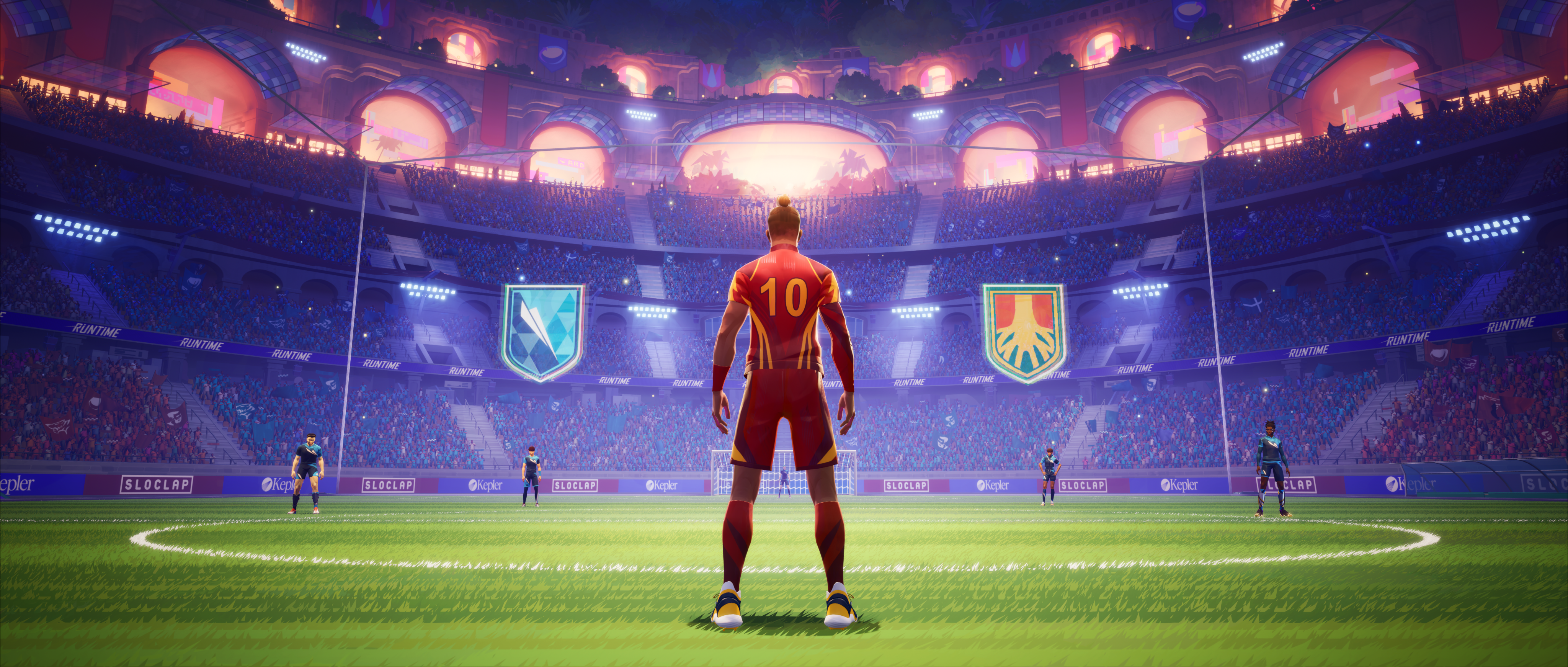Anatomy of a Touch
The epic highs and lows of digitized sports
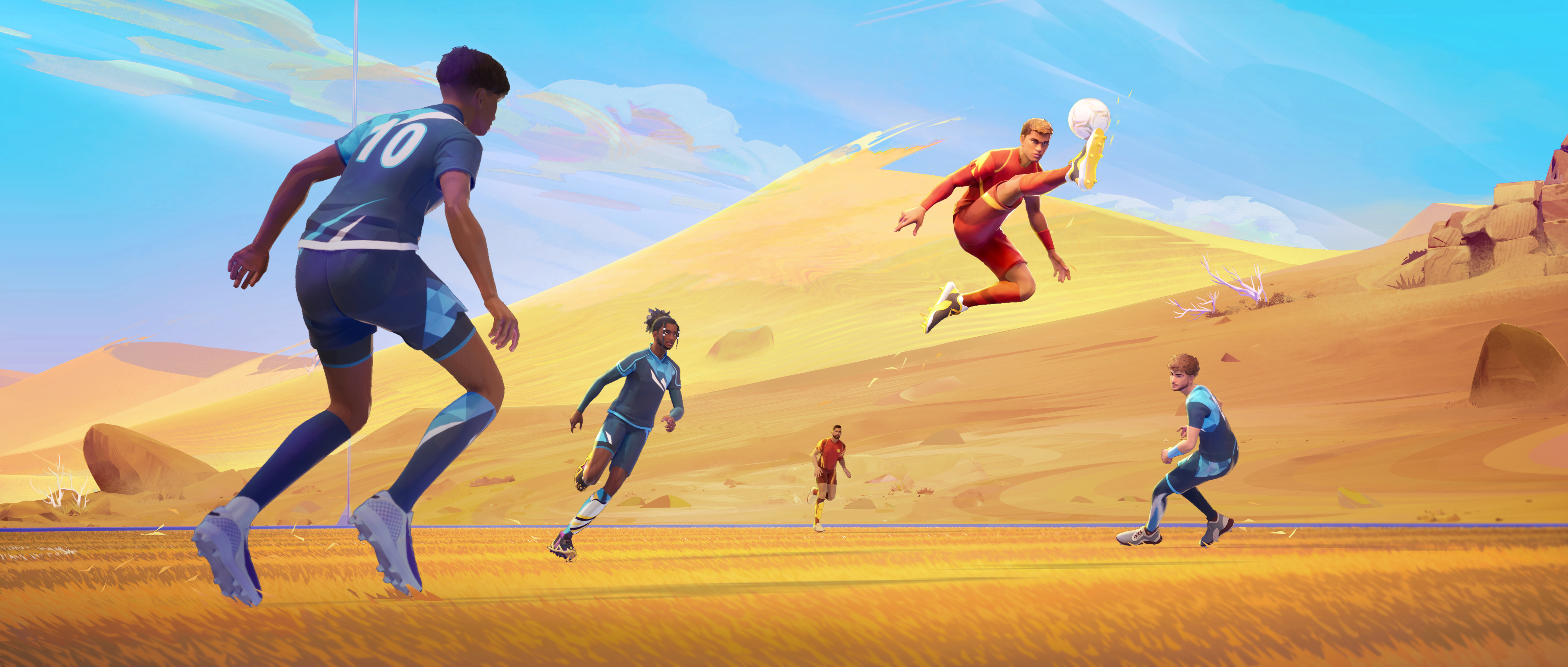
While I have not played the physical, real game of football in a long time, I do still remember some of what those school and weekend coaches would drill into my brain about it. What seemed to attract the most importance was the concept of the “touch”, i.e, the first touch you get on a ball in any given play. The touch was of paramount importance, not just setting the stage for whatever action was to follow, but containing within it many of the fundamental notions of the sport.
The touch can be thought to be built of three parts: Position, Intent, and Control.
Position matters because it determines your ability to even get any contact with the ball. Maybe a good pass or otherwise good luck landed you in just the right spot to receive the ball easily, but it’s more likely you’ll need to run for it, maybe jump for it, even kick out your leg or head to prevent it from flying right past you. Bear in mind that you might be jockeying for this position with any number of players too, and how a player just begins to position themselves to receive a ball is vital.
Intent is then about what you want the ball to do as a result of your touch. The most basic output is “have the ball land at your feet”, but this is often the least desired outcome outside of just handing the ball right back to your opponent. This is because a ball and / or player in motion is far harder to intercept than were they motionless. So a touch might be best used to spur the ball forwards, allowing you to follow it up the pitch with momentum. The touch could also function to pass the ball to a fellow teammate, away from opponent expectations and interference. A touch can even be what scores a goal, the ball provided just the right angle and speed to steer it to the back of the net. And ofcourse a touch can be the thing that prevents the ball from hitting the net too.
Control is the ability to execute on intent, because do you really know exactly when to jump such that the top of your head hits the ball at the right angle, speed and position such that it lands in the hands of your goalie? Isn’t it far more likely that you’ll miss it entirely, or that you’ll hit it away from your goalie and score an own goal? Control is of course influenced by positioning, because poor positioning leads to a lower chance of successful control. This risk of control can also influence intent, because if you distrust your ability to execute, then you likely simplify your intent or abandon it entirely.
So the touch is an important and deeply complicated element of football, happening hundreds, if not thousands, of times in a single game, each one fueled by a number of factors and then determining large swaths of the game to follow. It’s with this context that I ask… where is the touch in football games?
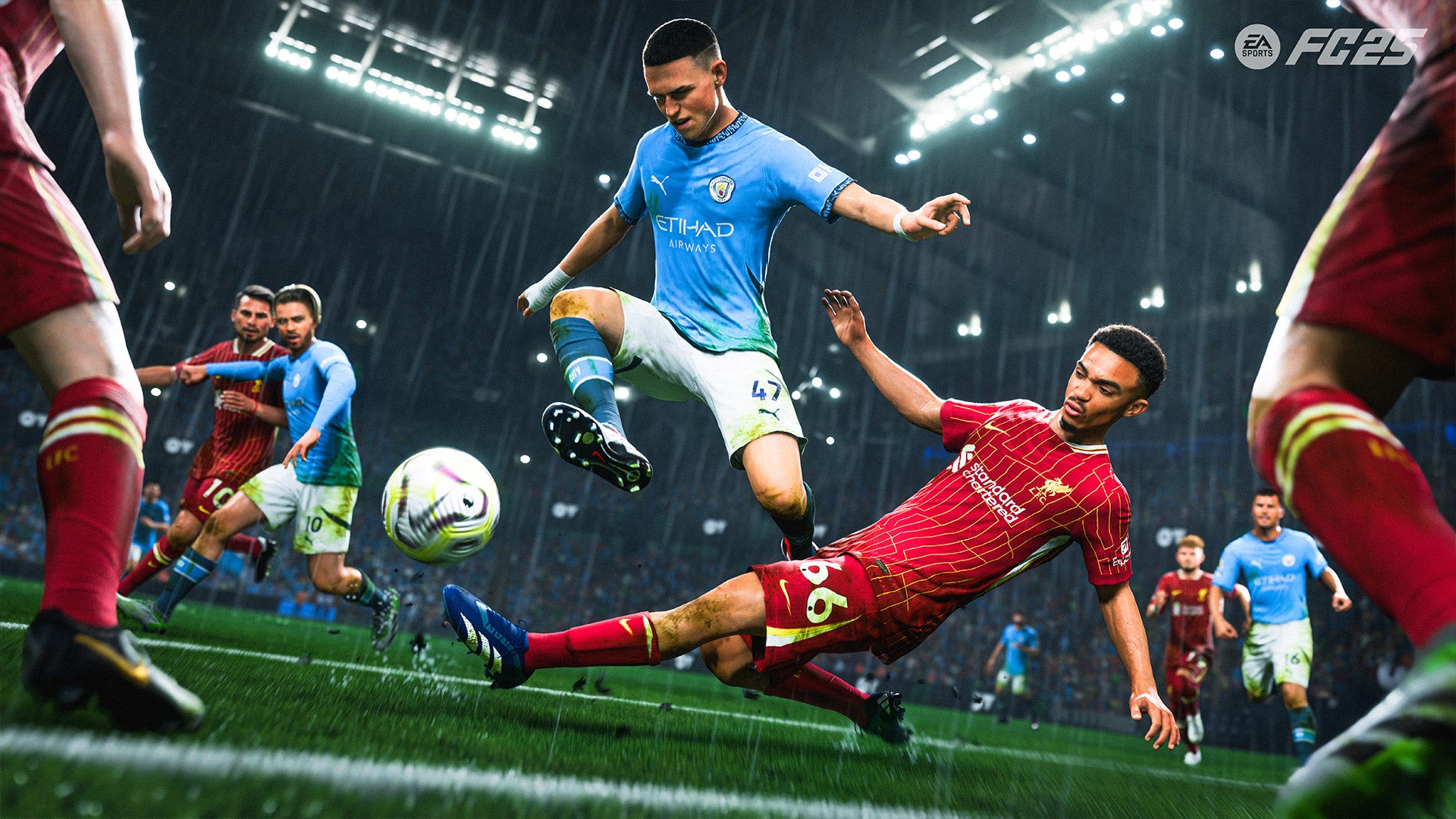
I have not played EA Sports FC (née FIFA) for a long time, longer even than since I played real football. But reviewing both my own memories and footage of the modern iterations, it’s remarkable how not present this concept of the touch is. Run a player onto a ball and it essentially magnetizes to them, the ball moving in whatever direction the player would like, up until they perform an action or an opponent performs an action on them. In this context, positioning continues to be emphasized but control is largely assumed to be perfect, and intent is thus perfectly executed.
Is this an abandonment of the core notions of football? Well, in a sense, yes. But I respect that that this abandonement isn’t totally unfair in the context of digitized sports games that games like EA Sports FC, alongside it’s contemporary ilk like Madden or NBA 2K, exist within.
Consider that these are digitized sport games about professional sports players, people whose entire careers are centered on their ability to fundamentally execute on the core mechanics of their given sport. In fact, this ease of play is an undeniable part of the fantasy of play when people come to these games. When one plays as… (googles "good footballer")... Mbappé, you simply don’t expect him to struggle with making the ball go forwards. Thus, having a set of semi-complicated inputs be required to make the ball go forward as Mbappé would be antithetical to the fantasy.
One also has to consider the fundamental conceit that the play of these games is designed around: Full team control. In most of these game’s main modes, the player is allowed to control every player on the team, swapping between whoever either has control of the ball, or whoever is closest to the ball. This has two knock on effects: For one, while the player might be engaging in the fundamental basic experience of a given sport’s play from moment to moment, they are also engaging with the large-scale strategy of a sport. In this sense, having them also engage in the complexities of base play aspects might simply overload the player cognitively. And on the other hand, consider that one of the most basic action a player can perform in this style of game is for the player to pass from themselves to an NPC, who they will then immediately take control over. If that NPC were to fumble the ball, or the player had to execute a set of inputs to simply receive the ball they passed to themselves, this basic action would become significantly more complex and frustrating than it should really be, given that the player has essentially just passed to themselves.
So, I understand why things like the touch might get left out of the large-scale digitized sports games as they pursue their larger goals and their broad swath of play modes and experiences. Yet, I do still find this a little disappointing. Because while I can enjoy these games on occasion, it is also undeniably in the awkward side-streets of the games, where anything from the fundamentals to the ancillary of a sport are highlighted, that I most enjoy them.
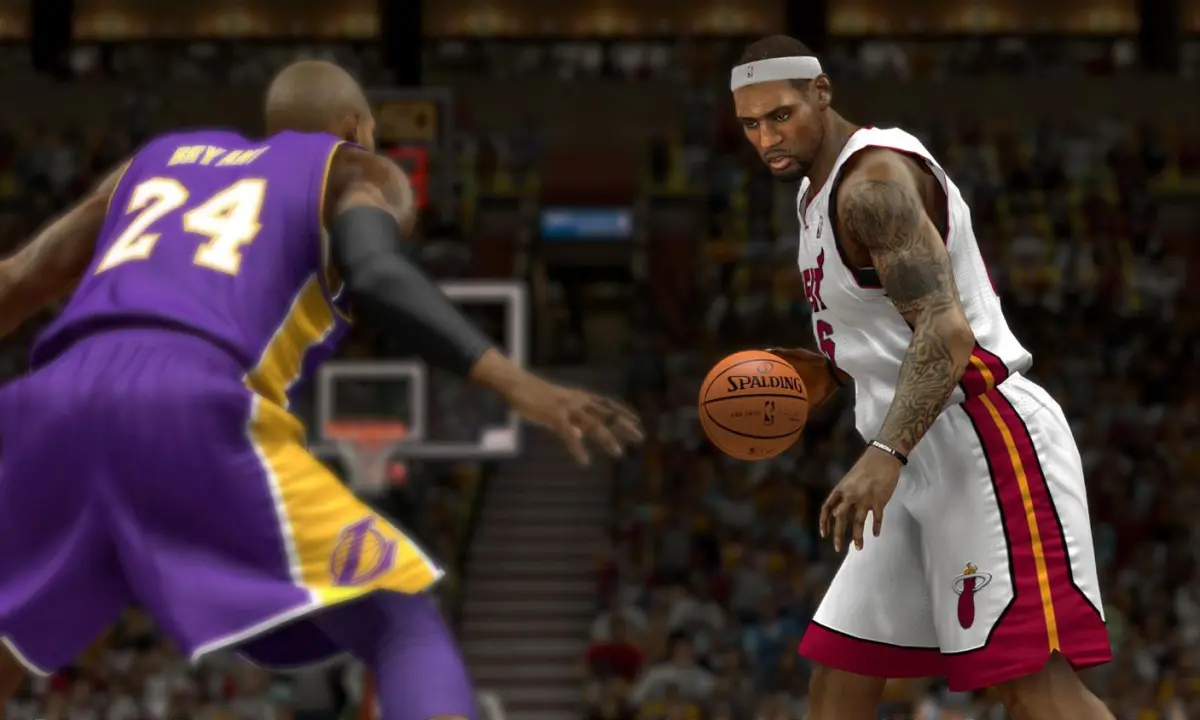
I had a really good time with the MyPlayer mode of NBA 2K14, because while it was ostensibly about you being a gifted basketball prodigy, I got to have a very different but even more fun play experience of absolutely sucking at basketball professionally. In this mode, you would only play as your created character and your performance on the court would be scored in real time. I, being bad at basketball and not understanding anything about it beyond the basic ruleset, would barely scrape a B+ at best, far more often landing in a C or D territory, especially because it factored in your NPC teammates' opinions of you in the process. Scoring well meant not just trying to score loads of points, but find good passes to your teammates to lay them up, or not make bad calls for a pass if you were in a bad position. This mode of play, of considering your own performance and how it relates to your team, is really cool, and fundamental to what made this gamemode interesting for me.
The thing is, I would spend the majority of most games quite literally sitting on the side of the court while my teammates played instead. This was because I was bad at the game, which the game could recognise, and so it would only send me out for only a few minutes in the 2nd and 3rd quarters before subbing me back off towards the end of the game so better players could make up for my failings. In fact, even while on the court players would try not to pass to me, even when I was in good positions, cause the game simulated their distrust in my ability to execute with the ball. Is this a very weird, in some ways just bad, situation to end up in when trying to live out the fantasy of playing a professional sport and being good at it? Yes, undeniably. But as is so often the case, I think this kind of player-antagonism rules, especially when the player’s own actions invited it.
And this all leads into perhaps my favourite part of the game: The post-match interviews. These followed a pretty basic formula, a reported asking a single question like “Your team lost, what went wrong?”, with the player getting four possible answers, in the range of “Our team did great today, I was the weak link” to “I think our coach just didn’t play us right” to “Obviously the problem was that no one passed to me”. These answers, alongside your play, would go on to inform your general standing in three categories: The aforementioned “How much do your teammates like you?” bar, but also “How much do fans of the team like you?” bar and, separately, the “How much do your fans like you?” bar. This range of scores, alongside an internal fake twitter that would commentate on your actions, would allow for really compelling roleplay: Do you sacrifice your ego for the sake of your team to try and win goodwill? Do you amp up your own reputation to get a better contract? Maybe even make your team’s fans hate you to up your chances of getting traded?
Now, were these ideas far more interesting in theory than in practice? Of course. My player was never at risk at simply being fired, which should have been the obvious outcome of my play, and I still often found myself being put into situations that simply did not befit my skillset or notoriety. Yet, what I liked about my time with NBA 2K14 was that it was not just about how I was kinda shit at basketball, but instead about the ways in which someone who is shit at basketball, yet fluked into doing it professionally, attempts to maintain a professional reputational and holds onto their spot as long as possible. To be able to play out this fantasy was far more interesting than the far more simplistic “What if you were simply the best at basketball?”.
(I feel like the increased attention and resources put into digitized sports games story modes vindicates this notion, even when they are also about being “the best”. People want story and conflict in their experiences, and if the game cannot produce that internally, having it injected via external forces is accepted. And on that note, if you have not seen tke Spike Lee directed NBA 2K16’s Livin’ Da Dream… I implore you to go look this up. Deeply fascinating and strange to see a talented if deeply complicated filmmaker do some version of their work in the context of an annualized sports game)
It is for the same reasons that I like the fantasy of “Maintaining a professional basketball career” that I think about the notion of the touch in football, even in spite of them being at opposite ends of what is actually required of playing a sport. I like them because they speak to the real and localized level of play, of base manipulation of in-game objects to the complex social politics of team sport. And it is for these reasons that I have found myself obsessed with Sloclap’s Rematch.
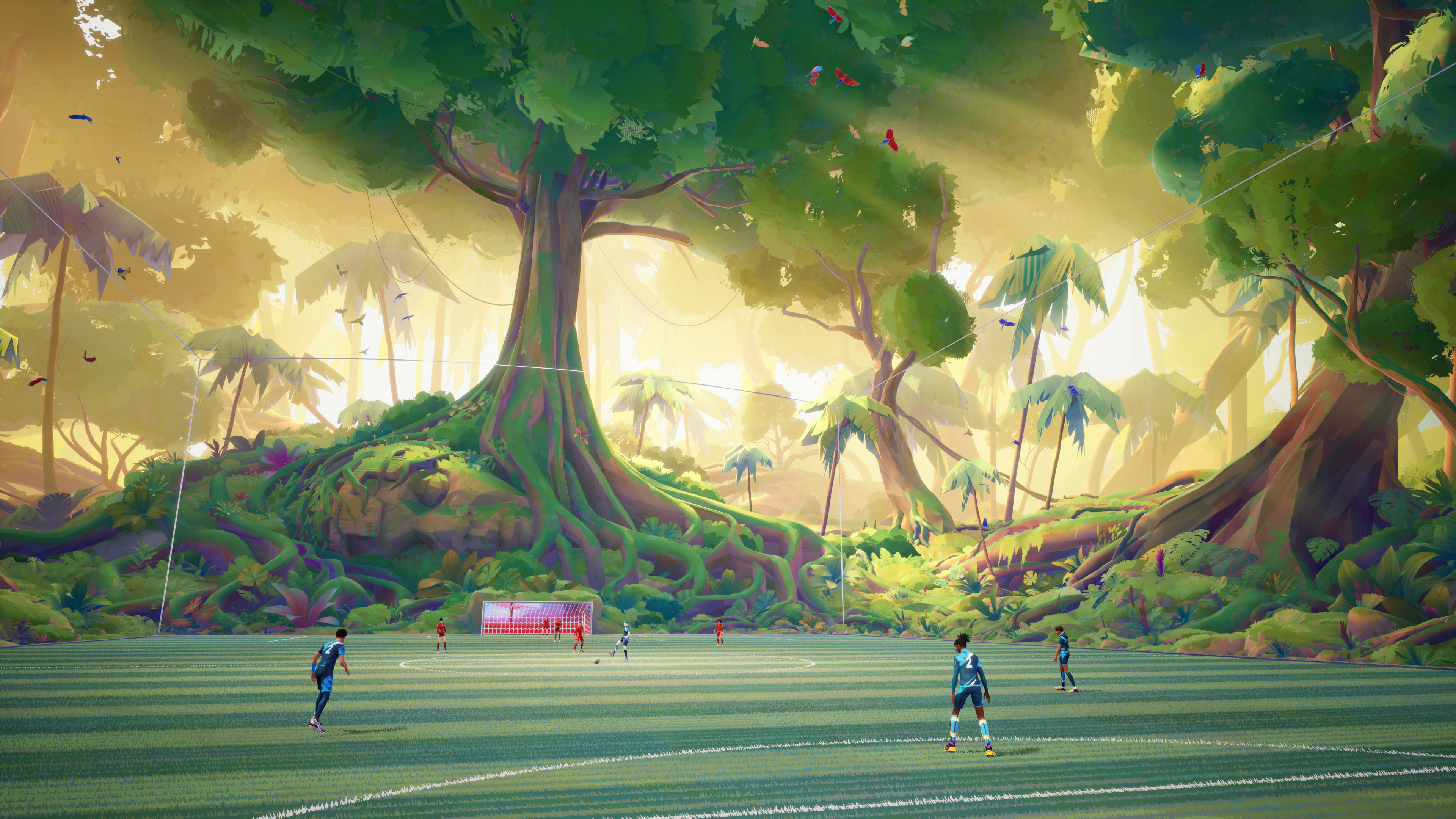
Rematch is a team based, multiplayer football game, from 3 to 5 a side, with simplified, almost Rocket Leage-esque rules (6 minute matches, no offsides, no outs, no fouls). You play a single player on a team, with a stamina bar you have to manage and a variety of simple yet deep actions that allow you to manipulate the ball. You might use the right bumper to augment any ball oriented moves to have them go into the air, or the left trigger to go into a defensive, more tactile stance. The game’s 3rd person camera even has you physically aim your kicks akin to how you might aim a gun in a third person shooter. But most importantly, it has a touch button.
Using the touch, you can stop the ball, push it forward in any direction, even flick it up with the aforementioned right bumper, but the player must use this (or one of the other ball interaction buttons) to meaningfully "catch" the ball. Don't press it, and your character will simply stand stil as the ball goes by them. This combines with what’s most special about Rematch: the ability to queue an action in advance.
If you’re in the right position to receive the ball, a diamond icon will appear over it. At this point, pressing any ball-oriented action input will prime your character to execute that move from the position, whether it be chesting a ball down to your feet, headering a ball over an opponent and to your teammate, or even bicycle kicking the ball into the goal. All of this is achieved via the standard interaction buttons, but it’s tailored to the best style of action you would want to perform given the scenario at hand.
Yet, what complicates this is that you also have to consider that your opponent might also be queuing up their own actions, and depending on their relative position or the speed of their action, they can absolutely beat you to the touch. Equally, they could be predicting the move you're about to make, and planning their response in advance. And while Rematch doesn’t have NPC players or teammate scoring, it certainly does have the toxicity of any multiplayer team game. Call for the ball only to make a selfish run with it and lose it? Expect not to be passed to for a while. Make a series of careful passes, or score a daring shot? Enjoy the good graces and increased trust.
In these senses, Rematch matches my experience of playing football perhaps more than any other. The fundamentals of the touch feel adequately represented without being overly complex in terms of input, and similarly, the experience of having to understand your place within a team and having a responsibility to play well for them is fully felt, though mercifully diluted by the inherent anonymity of online matchmaking.
It’s notable that I find myself drawn to this kind of digitized version of a sport, and I respect that I might feel differently about them if I closely followed the internal politics of a sporting league or was a regular player of the sport in the real world. Yet, I also think these experiences speak to what we like about sports: the complexity and skill required in the base manipulation of an object and the decision making about what to do with that object, all alongside the personal responsibility and social politics that come from executing on the former within the context of a team. These aspects are what produce interesting stories, ones that are hopefully illustrated in the final score, yet whose specific small contours and arcs are only revealed by the experience of play. This style of story is what we come to sports for, and perhaps more broadly what we seek from games in general. It is a simple yet wonderous delight to find a game that is able to, time and time again, will these stories into being, digitized or otherwise.
